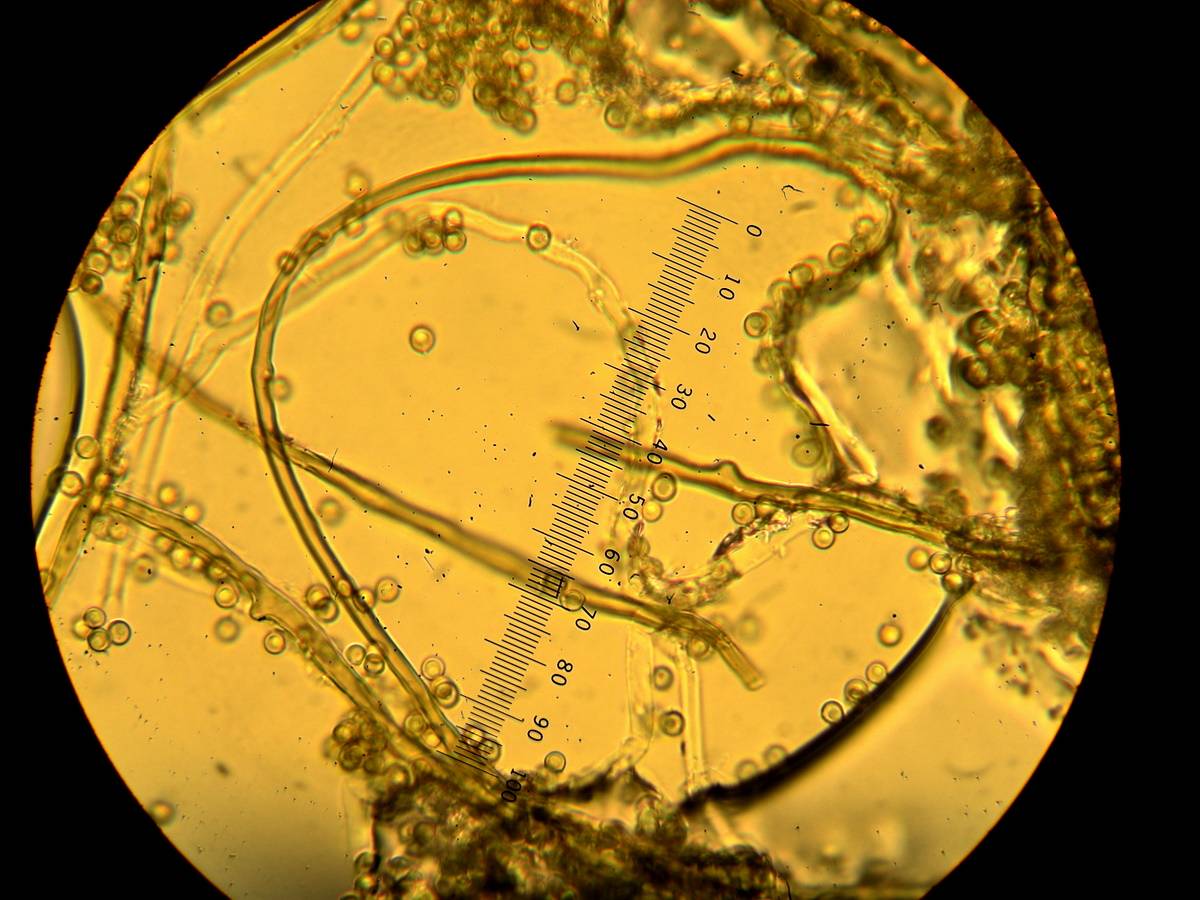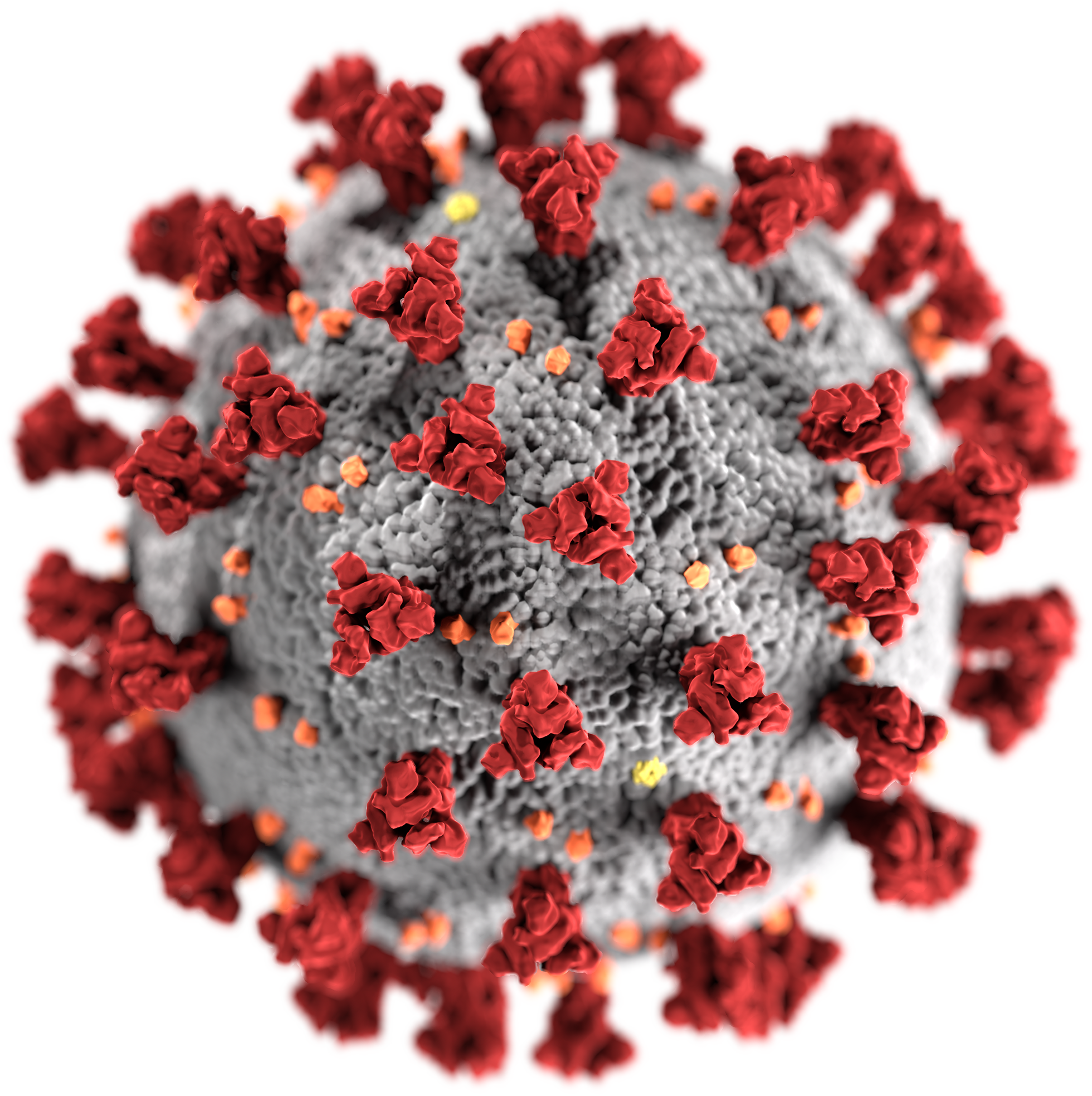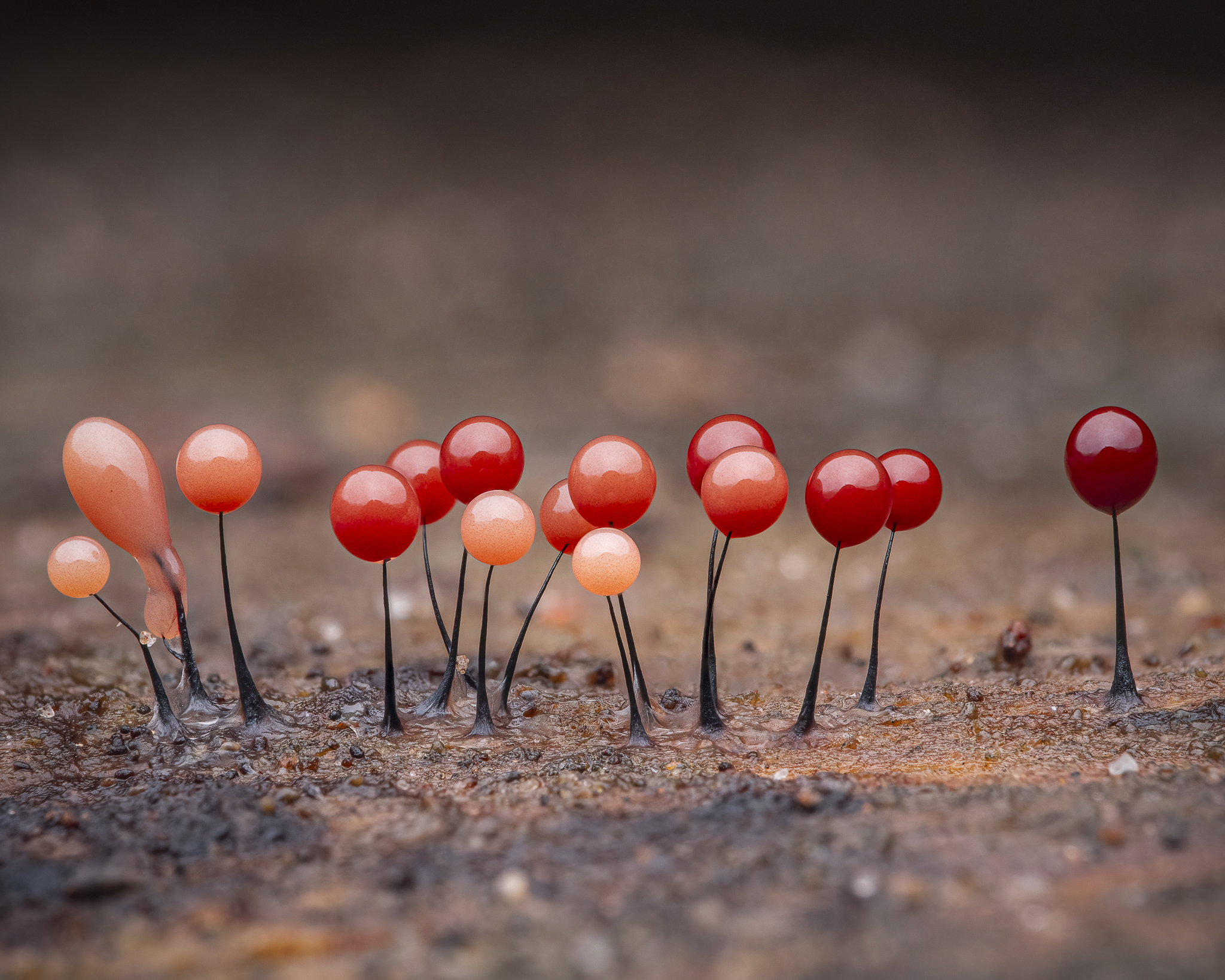|
Brefeldia Maxima
''Brefeldia maxima'' is a species of non-parasitic plasmodial slime mold, and a member of the class Myxogastria, Myxomycetes. It is common name, commonly known as the tapioca slime mold because of its peculiar pure white, tapioca pudding-like appearance. A common species with a worldwide distribution, particularly in North America and Europe. It is often found on bark after heavy rain or excessive watering. Their spores are produced on or in aerial sporangia and are spread by wind, however beetles of the family Latridiidae are also reported to disperse the spores. Bonner states that soil invertebrates and rain mainly disperse spores as they are sticky and unlikely to be carried by air currents. The genus is named after German botanist and mycologist Julius Oscar Brefeld (August 19, 1839 – January 12, 1925). Distribution Found throughout the United Kingdom and common in Europe, ''Brefeldia maxima'' is known to be much rarer in North America. Description and habitat File:Brefel ... [...More Info...] [...Related Items...] OR: [Wikipedia] [Google] [Baidu] |
Elias Magnus Fries
Elias Magnus Fries (15 August 1794 – 8 February 1878) was a Swedish mycologist and botanist. He is sometimes called the Mycology, "Linnaeus of Mycology". In his works he described and assigned botanical names to hundreds of fungus and lichen species, many of which remain authoritative today. Career Fries was born at Femsjö (Hylte Municipality), Småland, the son of the pastor there. He attended school in Växjö. He acquired an extensive knowledge of flowering plants from his father. In 1811 Fries entered Lund University where he studied under Carl Adolph Agardh and Anders Jahan Retzius. He obtained his doctorate in 1814. In the same year he was appointed an associate professorship in botany. Fries edited several exsiccata series, the first starting in 1818 under the title ''Lichenes Sveciae exsiccati, curante Elia Fries'' and the last together with Franz Joseph Lagger under the title ''Hieracia europaea exsiccata''. He was elected a member of the Royal Swedish Academ ... [...More Info...] [...Related Items...] OR: [Wikipedia] [Google] [Baidu] |
Capillitium
Capillitium (pl. capillitia) is a mass of sterile fibers within a fruit body interspersed among spores. It is found in Mycetozoa Mycetozoa is a polyphyletic grouping of slime molds. It was originally thought to be a monophyletic clade, but in 2010 it was discovered that protostelia are a polyphyletic group within Conosa. Classification It can be divided into dictyoste ... (slime molds) and gasteroid fungi of the fungal subdivision Agaricomycotina. In the fungi, the form of the capillitia, including shape, size, branching patterns, presence or absence of slits or pores, thickness of the walls, and color, are features that can be used to identify certain species or genera. References {{Reflist, refs= {{cite book , title=Poisonous Mushrooms of the northern United States and Canada , vauthors=Ammirati J, Traquair JA, Horgen PA , year=1985 , publisher=Fitzhenry & Whiteside in cooperation with Agriculture Canada , location=Markham, Ontario , isbn=978-0889029774 , page=30, 376 ... [...More Info...] [...Related Items...] OR: [Wikipedia] [Google] [Baidu] |
Macbrideola
''Macbrideola'' is a genus of Amoebozoa in the family Stemonitidaceae. As of 2015, there are 17 species in the genus. The genus name of ''Macbrideola'' is in honour of Thomas Huston Macbride (1848–1934), who was the tenth president of the University of Iowa and was a naturalist and botanist. The genus was circumscription (taxonomy), circumscribed by Henry Clark Gilbert in ''University of Iowa Studies in Natural History'' vol.16 on page 155 in 1934. Species *''Macbrideola andina'' *''Macbrideola argentea'' *''Macbrideola confusa'' *''Macbrideola cornea'' *''Macbrideola decapillata'' *''Macbrideola declinata'' *''Macbrideola dubia'' *''Macbrideola herrerae'' *''Macbrideola indica'' *''Macbrideola lamprodermoides'' *''Macbrideola macrospora'' *''Macbrideola martinii'' *''Macbrideola oblonga'' *''Macbrideola ovoidea'' *''Macbrideola reticulospora'' *''Macbrideola scintillans'' *''Macbrideola synsporos'' References Myxogastria Myxogastria genera {{Amoebozoa-stub ... [...More Info...] [...Related Items...] OR: [Wikipedia] [Google] [Baidu] |
Lamproderma
''Lamproderma'' is a genus of slime molds in the family Lamprodermataceae. As of 2015, there are 46 species in the genus. Species *'' Lamproderma acanthosporum'' *'' Lamproderma aeneum'' *'' Lamproderma alexopouli'' *'' Lamproderma anglicum'' *'' Lamproderma arcyrioides'' *'' Lamproderma argenteobrunneum'' *'' Lamproderma cacographicum'' *'' Lamproderma collinsii'' *'' Lamproderma columbinum'' *''Lamproderma cristatum'' *'' Lamproderma cucumer'' *'' Lamproderma debile'' *''Lamproderma disseminatum'' *''Lamproderma echinosporum'' *'' Lamproderma echinulatum'' *'' Lamproderma elasticum'' *''Lamproderma granulosum'' *''Lamproderma griseum'' *''Lamproderma gulielmae'' *''Lamproderma hieroglyphicum'' *''Lamproderma kowalskii'' *''Lamproderma latifilum'' *''Lamproderma laxum'' *''Lamproderma lycopodiicola'' *''Lamproderma maculatum'' *''Lamproderma magniretisporum'' *'' Lamproderma meyerianum'' *'' Lamproderma mucronatum'' *'' Lamproderma muscorum'' *'' Lamproderma nordica'' *'' Lampr ... [...More Info...] [...Related Items...] OR: [Wikipedia] [Google] [Baidu] |
Enerthenema
''Enerthenema'' is a genus of slime molds in the family Amaurochaetaceae Amaurochaetaceae is a family of slime molds in the order Stemonitidales. Genera *''Amaurochaete'' *'' Brefeldia'' *''Comatricha'' *'' Enerthenema'' *''Stemonaria'' *''Stemonitopsis ''Stemonitopsis'' is a genus of slime molds in the family .... As of 2015, there are four species in the genus. References Myxogastria Myxogastria genera {{Amoebozoa-stub ... [...More Info...] [...Related Items...] OR: [Wikipedia] [Google] [Baidu] |
Comatricha
''Comatricha'' is a genus of slime molds in the family Amaurochaetaceae. As of 2015, Index Fungorum includes 39 species in the genus. Species *'' Comatricha afroalpina'' *'' Comatricha aggregata'' *'' Comatricha alta'' *'' Comatricha anomala'' *'' Comatricha brachypus'' *'' Comatricha calderaensis'' *'' Comatricha ellae'' *'' Comatricha filamentosa'' *'' Comatricha fragilis'' *'' Comatricha fusiformis'' *'' Comatricha kowalskii'' *'' Comatricha laxa'' *'' Comatricha laxifila'' *'' Comatricha longipila'' *'' Comatricha meandrispora'' *'' Comatricha mirabilis'' *''Comatricha nigra'' *'' Comatricha nivalis'' *'' Comatricha nodulifera'' *'' Comatricha nutans'' *'' Comatricha orthotricha'' *'' Comatricha parvispora'' *'' Comatricha pellucida'' *'' Comatricha pseudoalpina'' *'' Comatricha pseudonigra'' *'' Comatricha pulchella'' *'' Comatricha pulchelloides'' *'' Comatricha reticulospora'' *'' Comatricha retispora'' *'' Comatricha rigidireta'' *'' Comatricha robusta'' *''Comatricha ru ... [...More Info...] [...Related Items...] OR: [Wikipedia] [Google] [Baidu] |
Colloderma
''Colloderma'' is a genus of slime molds in the family Lamprodermataceae Lamprodermataceae is a family of slime molds in the order Physarales Physarales is an order of Amoebozoa in the class Myxomycetes. It contains three families, the Didymiaceae, the Lamprodermataceae, and the Physaraceae. Physarales was c .... As of 2015, there are four species in the genus. References Myxogastria Myxogastria genera {{Amoebozoa-stub ... [...More Info...] [...Related Items...] OR: [Wikipedia] [Google] [Baidu] |
Wales
Wales ( ) is a Countries of the United Kingdom, country that is part of the United Kingdom. It is bordered by the Irish Sea to the north and west, England to the England–Wales border, east, the Bristol Channel to the south, and the Celtic Sea to the south-west. , it had a population of 3.2 million. It has a total area of and over of Coastline of Wales, coastline. It is largely mountainous with its higher peaks in the north and central areas, including Snowdon (), its highest summit. The country lies within the Temperate climate, north temperate zone and has a changeable, Oceanic climate, maritime climate. Its capital and largest city is Cardiff. A distinct Culture of Wales, Welsh culture emerged among the Celtic Britons after the End of Roman rule in Britain, Roman withdrawal from Britain in the 5th century, and Wales was briefly united under Gruffudd ap Llywelyn in 1055. After over 200 years of war, the Conquest of Wales by Edward I, conquest of Wales by King Edward I o ... [...More Info...] [...Related Items...] OR: [Wikipedia] [Google] [Baidu] |
Cytoplasmic Streaming
Cytoplasmic streaming, also called protoplasmic streaming and cyclosis, is the flow of the cytoplasm inside the cell, driven by forces from the cytoskeleton. It is likely that its function is, at least in part, to speed up the transport of molecules and organelles around the cell. It is usually observed in large plant and animal cells, greater than approximately 0.1 mm. In smaller cells, the diffusion of molecules is more rapid, but diffusion slows as the size of the cell increases, so larger cells may need cytoplasmic streaming for efficient function. The green alga genus Chara (alga), ''Chara'' possesses some very large cells, up to 10 cm in length, and cytoplasmic streaming has been studied in these large cells. Cytoplasmic streaming is strongly dependent upon intracellular pH and temperature. It has been observed that the effect of temperature on cytoplasmic streaming created linear variance and dependence at different high temperatures in comparison to low temper ... [...More Info...] [...Related Items...] OR: [Wikipedia] [Google] [Baidu] |
Józef Rostafiński
Józef Tomasz Rostafiński (14 August 1850 – 5 May 1928) was a Polish botanist. Life He was born in Warsaw, and studied in Szkoła Główna Warszawska (1866–1869), Jena, Halle (Saale), Halle, and Strasbourg, where he achieved his PhD before being appointed lecturer at the university of Kraków. Retrieved : 2011-11-06 One of his books, the ''Przewodnik do oznaczania roślin w Polsce dziko rosnących'' (''Guide to Wild Plants in Poland''), had 21 editions between 1886 and 1979. In one of his notable works, Józef Rostafiński did extensive research about the Polesie region in eastern Poland, and claimed it lacked certain type of trees due to the soil and ground. Streets bearing his name can be found in the Polish cities of Kraków, Warsaw, and Wrocław. References [...More Info...] [...Related Items...] OR: [Wikipedia] [Google] [Baidu] |
Acellular
Non-cellular life, also known as acellular life, is life that exists without a cellular structure for at least part of its life cycle. Historically, most definitions of life postulated that an organism must be composed of one or more cells, but, for some, this is no longer considered necessary, and modern criteria allow for forms of life based on other structural arrangements. Nucleic acid-containing infectious agents Viruses Researchers initially described viruses as "poisons" or "toxins", then as "infectious proteins"; but they possess genetic material, a defined structure, and the ability to spontaneously assemble from their constituent parts. This has spurred extensive debate as to whether they should be regarded as fundamentally biotic or abiotic—as very small biological organisms or as very large biochemical molecules. Without their hosts, they are not able to perform any of the functions of life—such as metabolism, growth, or reproduction. Since the 195 ... [...More Info...] [...Related Items...] OR: [Wikipedia] [Google] [Baidu] |
Slime Mold
Slime mold or slime mould is an informal name given to a polyphyletic assemblage of unrelated eukaryotic organisms in the Stramenopiles, Rhizaria, Discoba, Amoebozoa and Holomycota clades. Most are near-microscopic; those in the Myxogastria form larger plasmodial slime molds visible to the naked eye. The slime mold life cycle includes a free-living single-celled stage and the formation of spores. Spores are often produced in macroscopic multicellular or multinucleate fruiting bodies that may be formed through aggregation or fusion; aggregation is driven by chemical signals called acrasins. Slime molds contribute to the decomposition of dead vegetation; some are parasitic. Most slime molds are terrestrial and free-living, typically in damp shady habitats such as in or on the surface of rotting wood. Some myxogastrians and protostelians are aquatic or semi-aquatic. The phytomyxea are parasitic, living inside their plant hosts. Geographically, slime molds are cosmopo ... [...More Info...] [...Related Items...] OR: [Wikipedia] [Google] [Baidu] |





